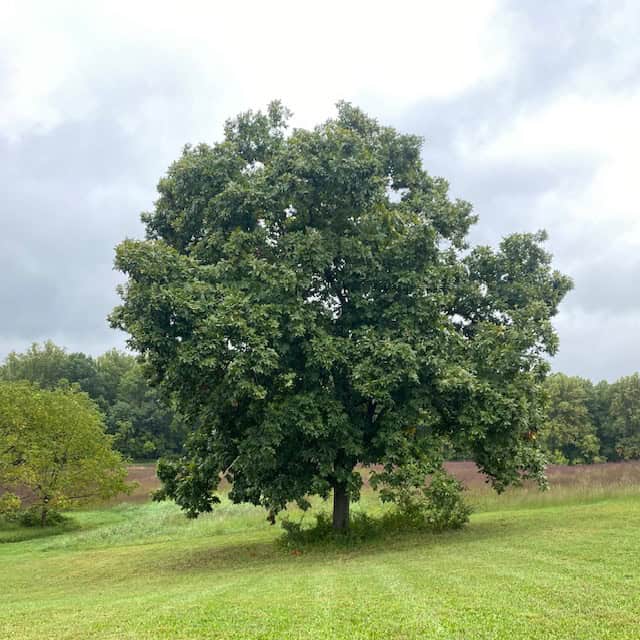The Mockernut Hickory is a lovely deciduous tree that is found in Virginia. It’s not the most common tree to find, but they are around. Read on to find out more.
General Growth Pattern
As I stated previously, the Mockernut Hickory is a relatively large deciduous tree. It can live for upwards of 200 years, which is a long time. It grows slowly, so even though it lives a long time, its not a real large tree. Most will reach heights of 50 to 80 feet tall at maturity. The nuts are only produced after the tree is 25 years old. Its large green leaves produce a dense foliage. As a result, the rounded crown is very defined.
This tree is not commonly found in nurseries. It has a deep taproot, that makes it difficult to transplant. Consequently, the taproot probably helps in be drought tolerant. It likes well drained sandy and clay loam soils. Like many trees, it does best in rich soil. The Mockernut Hickory prefers full sun and lots of room to grow.
Characteristics of the Mockernut Hickory
There are 3 main characteristics that help to identify this tree.
First are the leaves – The leaves are compound, 9-20 inches long, alternate, pinnate with 5-7 leaflets. Alternate on this tree means barely offset from the leaf across. The stagger is almost imperceptible. The serrated leaves are ovate-lanceolate (like elliptical), 3-6” long, and 1-2” wide. The terminal leaves are larger than the ones closer into the trunk. There are orange-brown hairs on the underside.
Second is the fruit or in other words, the nut – This is only good in the fall, when the edible nuts are produced. The nuts are light green, and they are yellow when mature. They clearly have 4 segments. As a result, when mature, they break apart easily and expose a small edible nut. The round nuts/fruit are about 30% bigger than a golf ball or somewhere around 1.5 -3 inches in diameter. Because wildlife loves these nuts, and the trees are usually prolific fruit producers, they make a mess. Their nuts and their preference for full sun, makes their ideal habitat slightly unique. The one in the top photo, is in a field. This is the perfect place for a Mockernut Hickory tree.
Finally, are the flowers – Flower production happens in the spring. Unfortunately, the flowers are relatively non-descript. The flowers are catkins. These are long flowing stems of flowers that are best described to look like pollen. This is not from a Mockernut Hickory, but its flowers look similar to this. It takes more advanced tree knowledge to identify the Mockernut hickory by its flowers.
Learn More
If you would like to learn more about the Mockernut Hickory tree, here are some great resources. First, the North Carolina Extension provides great information on this tree. Second, the Morton Arboretum is always a great place to look. Finally, the Missouri Department of Conservation website can help you distinguish between different types of hickory trees.

